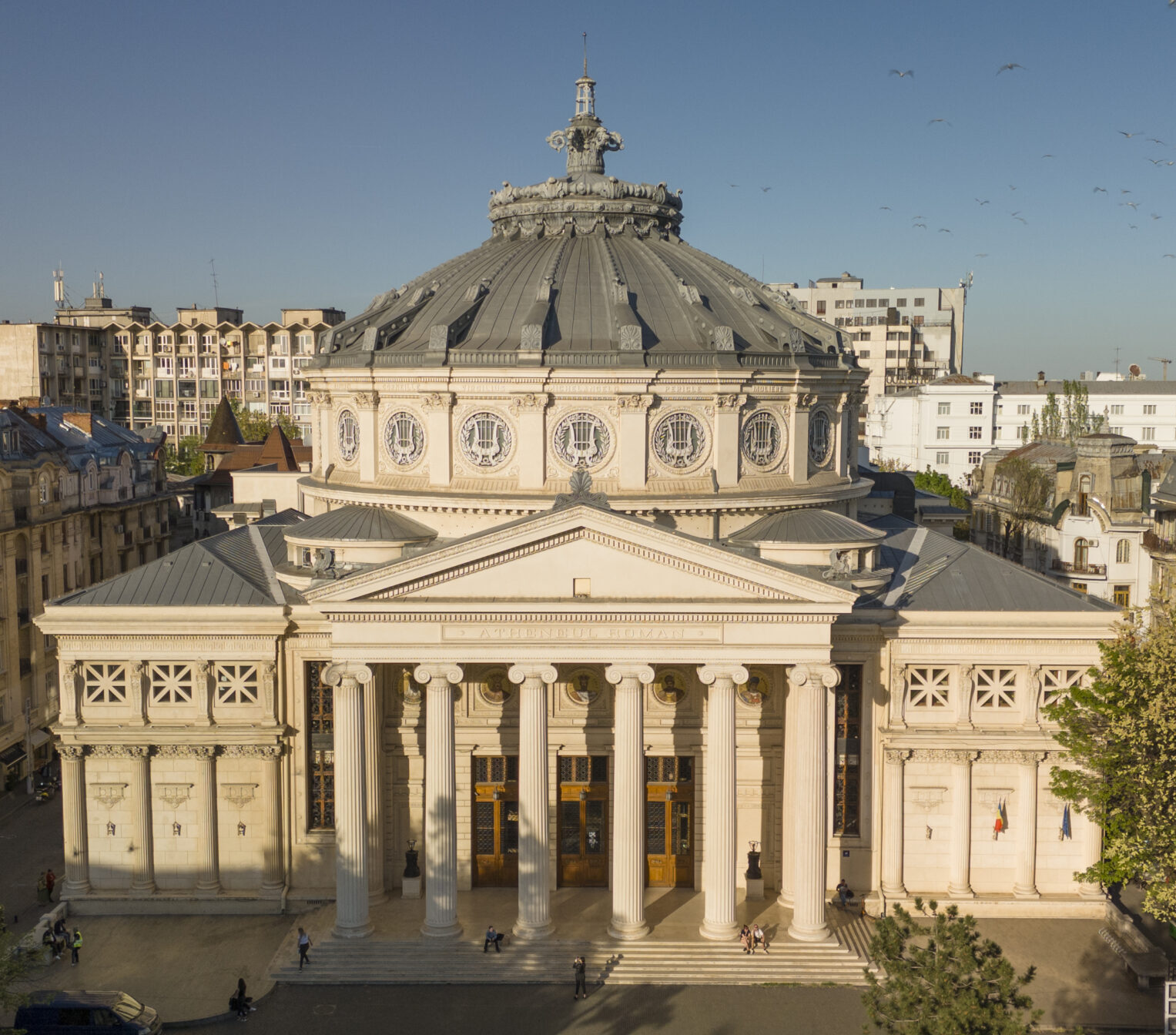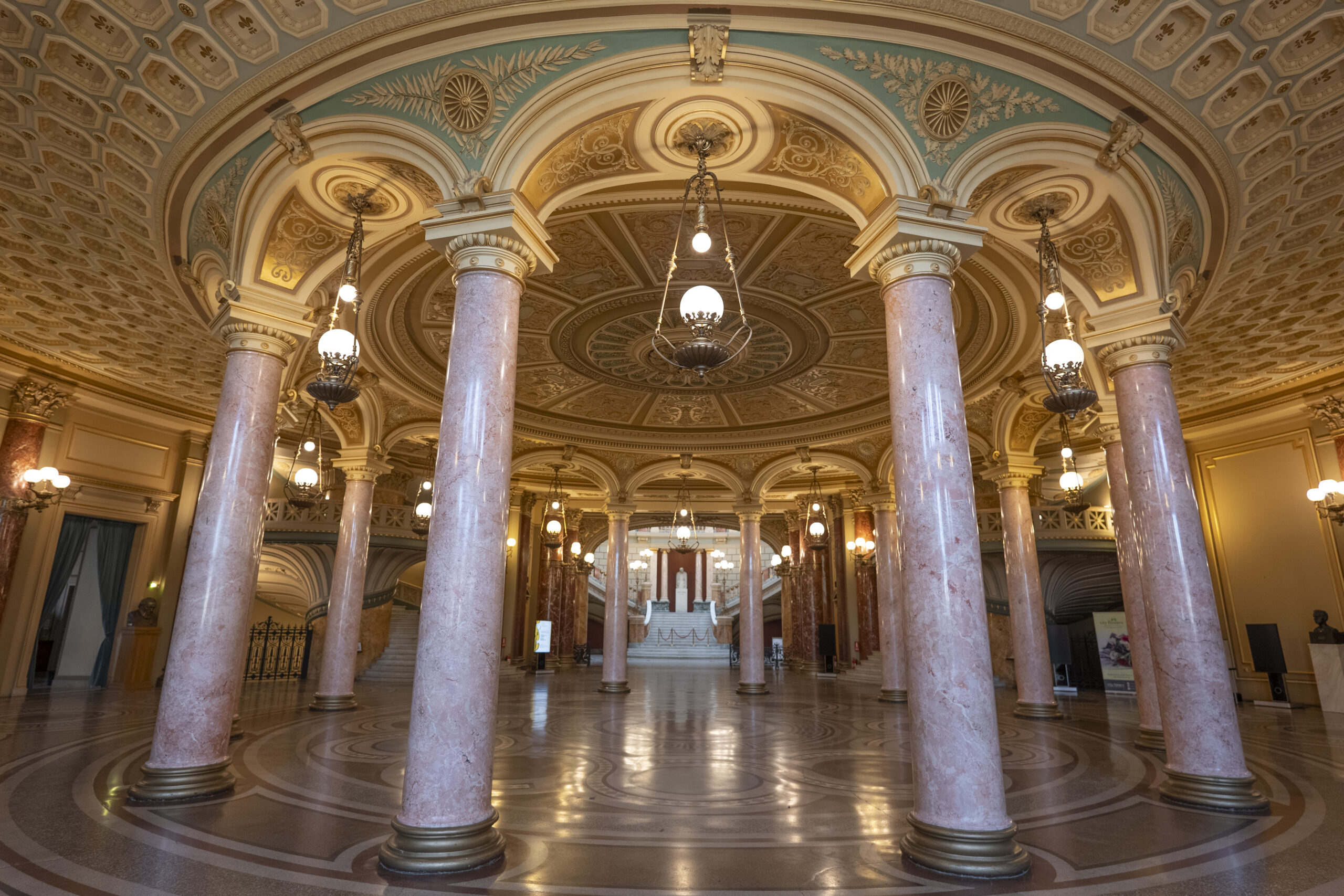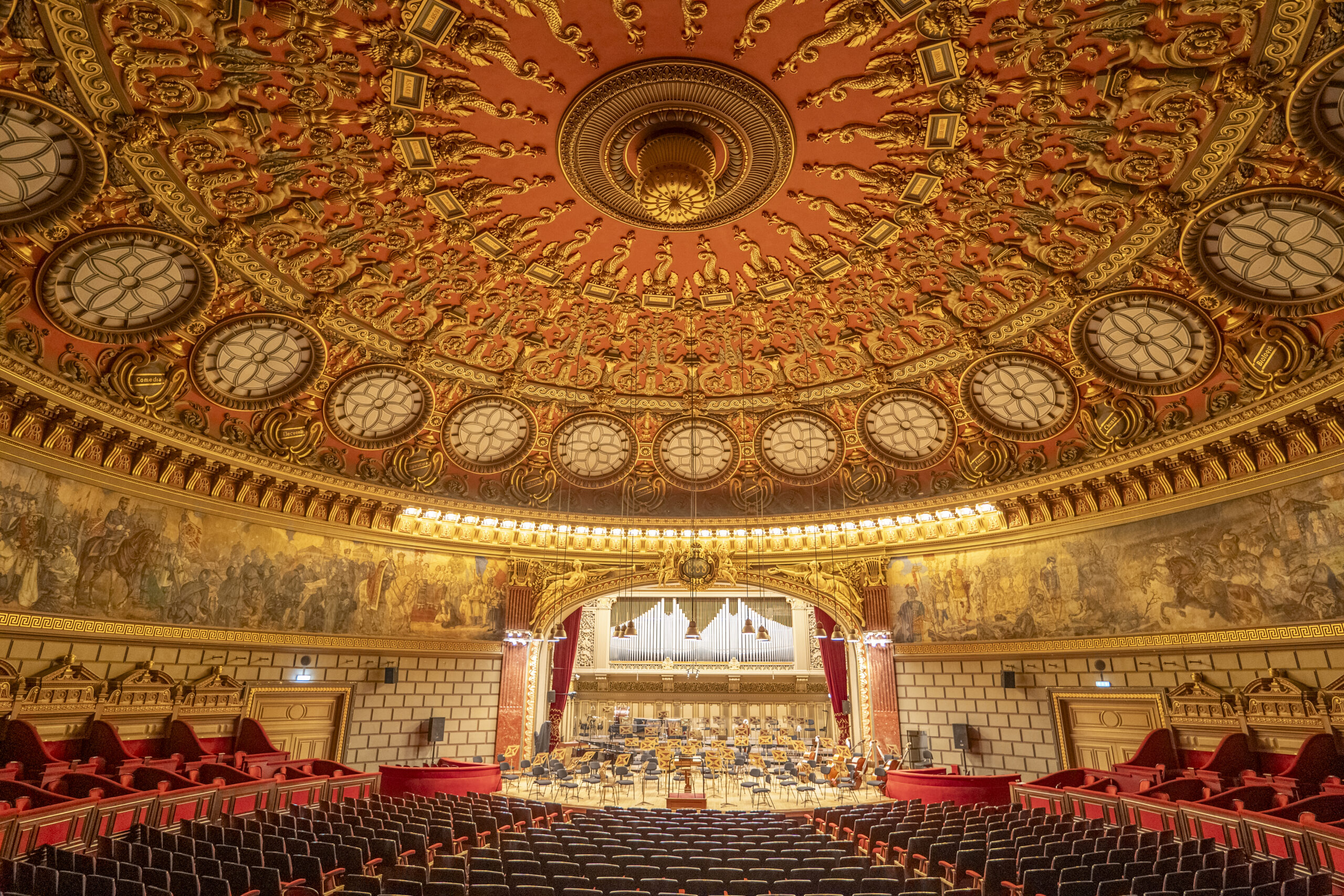This website uses cookies so that we can provide you with the best user experience possible. Cookie information is stored in your browser and performs functions such as recognising you when you return to our website and helping our team to understand which sections of the website you find most interesting and useful.
Romanian Athenaeum



The EHL Site
A symbol of Romanian culture standing for the modernisation and emancipation of Romanian society, the Romanian Athenaeum is a major Bucharest landmark and one of Europe’s most beautiful concert halls. It is located in the centre of Bucharest, near the National Museum of Art and Central University Library, and was built in the period when Romania was established as a modern state. The building is Neo-Classical in style, with features typical of the late-nineteenth-century French Belle Époque. It comprises a concert hall, whose 794 seats are ranged in an amphitheatre around the stage, and a 400-square-metre foyer with a 50-metre-long frontage. Along the frieze above the boxes unfolds the Great Fresco of the Athenaeum, painted by Costin Petrescu and unveiled in 1939. The fresco features twenty-four scenes from the history of the Romanian people.
The Romanian Athenaeum site is home to the George Enescu Philharmonic, a public concert institution subordinate to the Ministry of Culture. The management plan is focused on holding orchestral performances (cca 80/season), chamber music concerts as well as educational activities (cca 20 events/season), and hosting the Romanian Athenaeum Conferences. The site also hosts high-level cultural events organised by third parties, such as recitals, lectures, and charity concerts.
The Athenaeum was built by the Romanian Athenaeum Society, founded in 1865 by European-schooled Romanian intellectuals, and became home to the Philharmonic Society. Its foundation stone was laid on 26 October 1886 and the building work was done in several stages, the first one taking place between 1886 and 1888. The project was put forward by the Romanian Athenaeum Society, headed by Constantin Esarcu, an intellectual and erudite man of learning. On the recommendation of Charles Garnier, Albert Galeron was commissioned to design the building. Once the concert hall was finished in 1889, the Romanian Athenaeum became home to the Romanian Philharmonic Society.
European Dimension
A landmark of national and European importance, the Romanian Athenaeum has been listed as a Grade-A Romanian Historical Monument since 2015. It is a space dedicated to culture and, above all, classical music, part of Europe’s intangible heritage. It is a permanent venue for major events, ranging from conferences to major international festivals, and attracts tens of thousands of tourists annually.
As an institution its purpose is to propagate musical culture, bringing both masterpieces of classical music and contemporary works to the people. It is also a regular conference centre, promoting European values through debates on historical, social, literary, and scientific topics. Its activities are designed to meet the cultural, social, and educational needs of the public.
Bucharest’s Athenaeum Palace is home to the George Enescu Philharmonic, an institution that organises cultural events in partnership with the diplomatic missions and cultural institutes of European states. The Philharmonic Orchestra and Choir has given concerts to mark international events including the 2008 NATO Summit and Romania’s accession to the EU on 31 December 2006. The beginning of Romania’s presidency of the EU Council was marked by a joint concert by the Orchestra of the European Union and the George Enescu Philharmonic Choir. At the intergovernmental stage of the European Heritage Label back in 2007 – before becoming an European Action -, the Athenaeum was included on the European Heritage list, an event that coincided with Romania’s celebrations to mark the fiftieth anniversary of the signing of the Treaty of Rome on 25 March 1957.
The organization
The Romanian Athenaeum is managed by and home of the Georges Enesco Philharmonic, one of Europe’s oldest orchestras, which celebrated its one-hundred-and-fiftieth anniversary in 2018. From 1907 onwards, major international composers and musicians graced the concert hall of the Romanian Athenaeum, including Igor Stravinsky, Richard Strauss, Georges Enesco, Igor Stravinski, Richard Strauss, George Enescu, Pablo Casals, Herbert von Karajan, Wilhelm Kempff, Yehudi Menuhin, Svyatoslav Richter, Sergiu Celibidache, David Oistrakh, and, more recently, Siji Ozawa, Mischa Maysky, and Khatya Bunyatishvili.
George Enescu Philharmonic’s concert season includes works by both classical and contemporary European composers, including concerts dedicated entirely to contemporary music.
The activities of the Philharmonic are officially defined as follows:
- the performance of symphonic concerts and chamber recitals on its own premises and at other concert venues
- participation in concerts and performances held in partnership with other institutions
- the organisation of foreign tours
- the making of audio and video recordings
- the sale of recordings it has produced
The remit of the Philharmonic is broadly as follows:
- to organise symphonic, vocal-symphonic, choral, and chamber concerts whose repertoire draws on the national and universal musical heritage
- to promote Romanian music and encourage outstanding young talent from Romania and abroad
- to establish and cultivate a higher musical climate and act as the highest forum of national musical values
- to promote Romanian music internationally, taking on the responsibility of shaping, maintaining and developing Romania’s positive image in Europe.
